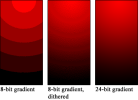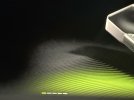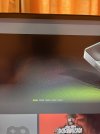This is gonna be mostly a rant about LG 34GS95QE-B.
FYI I already have a 144Hz 34" ultrawide with a G-Sync module and accustomed to VRR and UW goodness. I'm quite disappointed that moving to the latest-gen MLA+ 240Hz WOLED felt like a downgrade

Apart from the deeper blacks, it didn’t impress me. Yes, deep blacks are great, but It doesn’t mean much if the color accuracy is worse—so much worse that it can’t even produce proper yellows, instead displaying a mustard-orange like fake yellow. I read this is inherited to all WOLED panels due to using white LED for brightness. Colors feel washed out, and adjusting the vibrancy settings doesn’t help. I used all ICC profiles you can find online and settings (Rtings, Techless and some other YT profiles).
If you plan to use it for work as well, text clarity is bad. You can still save some clarity with clear type settings and higher scaling but still clear type doesn't work on everywhere. Text might be fine at 200% scaling on a 27/32" 4K WOLED screen, but not on a 1440p ultrawide WOLED.
The rest of the annoyances aren’t inherent to OLED itself but rather to my LG screen. HDR is bad due to the vignette like effect due to uncontrollable dimming on the edges. It goes so worse that reds become brown, greens to black, as the screen dimms on the edges to keep up with the brightness level it can produce. It works mostly in dark games like Dead Space but fails in brighter ones like Kingdom Come: Deliverance 2. While the monitor has a nice swivel, aggressive 800R curve still felt too much for me—1500-1600R is more comfortable. The extreme curve also makes screen glare somewhat worse, reflecting light from left to right and concentrating it in the middle with more intensity.
On top of that, LG’s OLED matte coating is very grainy, almost like a film grain effect. Mostly you won't notice but, you can notice it in the skies in games or on white-background text. My trusty curved LG IPS screen’s matte coating didn’t have this issue. Hard to believe they’ve regressed so much in six years.
Some good things; stand is great and takes little desk space, wish more screens were like this. The stand holds the screen firmly and no shakes. Hexagonal back lights might be dim for others but I liked it as it is. It can be helpful against eyestrain if the screen is the only light source in your room. OSD menu and joystick is usual LG goodness and easy to figure out. Blacks are really black. Response time is superb. Difference between 144Hz to 240Hz is noticable. But no DLDSR at 240Hz with DSC. You need to use 144Hz without DSC to be able to use DLDSR. Overall build quality is alright. It has a mouse bungee for even left hand people. SDR content is fine, no brightness dimming on the edges. But if I'm gonna pay a lot I'd at least expect HDR content work well. OLED burn in mitigation features are handy and very useful. It does work automagically without breaking your routine. As soon as display goes to standby or have static content for some time it starts refreshing the pixels.
Needless to say, I returned the monitor, because apparently washed out colored WOLED screens are not for me. I will stick with my ultrawide IPS screen a little longer—maybe I'll pull the plug and order a 240Hz UW QD-OLED or wait until next year's UW QD-OLEDs with updated pixel layout and/or no magenta-purple like blacks when a light source shines on them.




